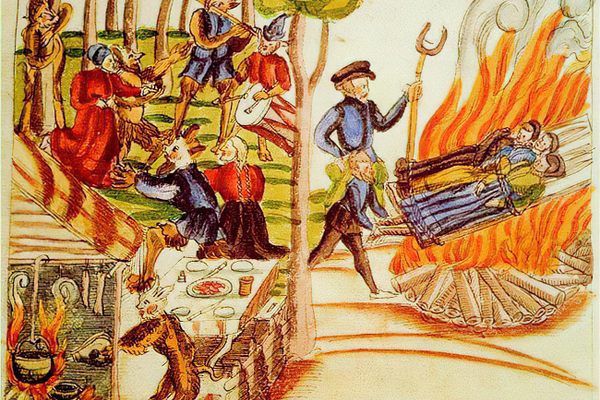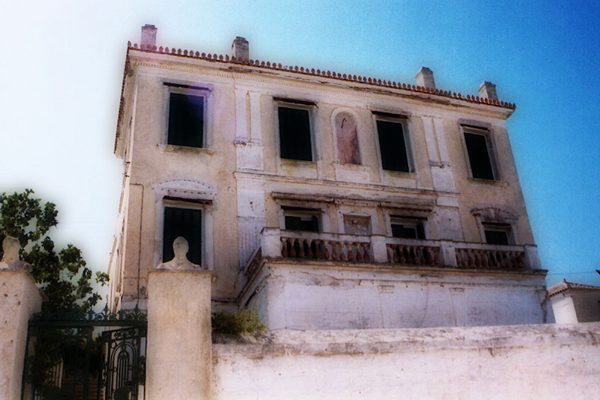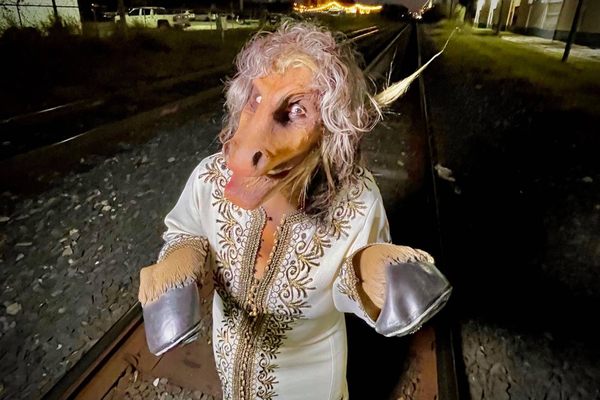At a Haunted Grocery Store, Trying to Explain the Unexplained Has Consequences
In rural Norway, flying potatoes and other strange events troubled staff and customers for years. What happened when people shared their stories?
Deep in a forest, near Norway’s eastern border with Sweden, lies a small village. Researchers studying the unexplained, disturbing phenomena here—and their effect on locals—have asked that we not name it. The main drag, such as it is, is lined with trees and well-spaced houses. There’s a gas station, and a church with a tall steeple. One of the largest buildings, a quaint-looking old white farmhouse, contains the town’s grocery store. Ghostbusters and supernatural enthusiasts have flocked to the store, looking for evidence of a haunting, but the store has also become the site of a different sort of investigation. A chance encounter here led a sociologist to create a case study that explores how experiencing the unexplained affects someone’s relationship with the rest of the world.
Lars Birger Davan, a doctoral candidate in sociology at Oslo Metropolitan University, happened by the store in 2018. He arrived late at night, when the shop was empty except for the manager. Davan, who was unaware of the building’s reputation, made a joke about the manager having only ghosts for company. “He just came out with this amazing story,” says Davan.
The manager told him about a yearslong battle with the shop’s electrical wiring, inexplicably smashed flower pots, and lurking, shadowy figures. It made for an interesting story, but “what struck me was how vulnerable he was, telling me all these things,” says Davan. The conversation inspired Davan to learn more about the limits people place on themselves when divulging strange experiences—and what happens when they do share details, at risk of being branded “crazy.”
It’s a boundary that Åke, the store manager Davan spoke with, came to know well. (We are not using his last name to protect his privacy.) Åke says that when he first began experiencing bizarre, seemingly supernatural things at work, he kept them to himself. “I thought it was only me,” he says. He says he told his sister, who worked with him in the store, “‘Maybe I’m getting crazy, or something is going on in my head.’” But she began noticing strange things, too.
Åke mentioned the abnormal events to other colleagues, and discovered they had all wondered if they were losing their minds. When customers began experiencing odd things—the tipping point was a woman getting hit by flying potatoes—people far beyond the village took notice. Eventually, local media and even a Norwegian ghost-hunting show visited the store and conducted investigations, trying to capture video and audio footage confirming a ghostly presence.
Ghost hunters suggested that the hauntings were caused by three spirits. According to their investigation, the ghosts of a kindly married couple who ran the store from the 1950s until the 1970s were purportedly frustrated by new-fangled technology and were blamed for causing electrical systems, such as the store’s alarms, to go on the fritz. Some of the more malicious activity was deemed the work of the angry ghost of a man who’d frozen to death outside the store in 1962.

Davan wasn’t interested in proving or disproving the existence of ghosts. He’s more focused on what it’s like to have strange experiences. “I’m not a ghostbuster—it’s more like catch-and-release,” he jokes. What interested him were the very real emotions experienced by Åke and the others who witnessed the strange events.
Davan shadowed the store’s employees and customers, interviewing them about what they’d seen and how it affected them. Sharing that you’re experiencing a different reality, he noted, can have harmful consequences. “People can think you’re crazy, it can affect your job opportunities and your relationships with other people,” Davan says.
At the same time, sharing your experiences with others who have had brushes with the unexplained can be reassuring. Åke says that while the store’s strange occurrences were unsettling—the experiences traumatized his sister in particular, who quit her job because of them—it helped him and his colleagues to know that they weren’t alone in their experiences.
Davan isn’t the first sociologist to study the societal rules around paranormal experiences. Saying that you’ve seen a ghost “comes with all these connotations of mental illness, or being just sort of naive or gullible, or buying into some sort of irrational belief system,” says Marc Eaton, a sociologist at Ripon College. “Because of that, a lot of people who hold those beliefs or believe that they’ve had those kinds of experiences don’t speak about it, unless they’re in these communities of like-minded people.”
While paranormal experiences can be isolating or terrifying, they can also improve our lives, says Dennis Waskul, a sociologist at Minnesota State University, Mankato. Waskul said that these experiences can breathe some fresh air into “a world that’s overly mechanized and a world that’s dominated by very predictable outcomes… a world of monotony where every day is just like the next damn day,” Waskul says. “And suddenly now, you’ve got a ghost in your house. Well, that is really friggin’ interesting.”
Davan’s research has moved on from the store and even from the field of paranormal experiences, but he hopes that his findings encourage people to be curious about strange, unexplainable things, and perhaps less judgmental of those who share their experiences.
Meanwhile, Åke no longer works at the haunted grocery store; he left in part because of the toll that working there took on his sister. But the store still stands at the edge of the forest, and strange events are still afoot. The new manager calls Åke often, seeking advice. “He talks to me a lot and said, ‘Ahh, you cannot believe what happened to me yesterday!’” says Åke. “I said, ‘Yes, I can—tell me about it.’”
























Follow us on Twitter to get the latest on the world's hidden wonders.
Like us on Facebook to get the latest on the world's hidden wonders.
Follow us on Twitter Like us on Facebook